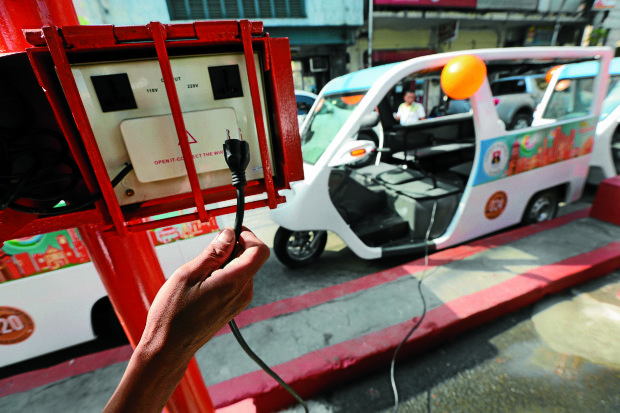
Running on batteries that can be fully charged in four to five hours, the environment-friendly e-trikes can carry up to seven
passengers and travel at a speed of up to 45 kilometers per hour.—GRIG C.MONTEGRANDE
Some 50 tricycle and “kuliglig” (motorized pedicab) drivers in Manila on Wednesday became the first batch of beneficiaries under the city government’s e-tricycle program.
“This is primarily a livelihood program with the main objective of providing our poor tricycle and kuliglig drivers [with] an ‘upgraded’ public transport vehicle which they can call their own and from which they could earn more,” Mayor Joseph Estrada said in a statement.
The first batch of beneficiaries are from District 3 which covers Binondo, Quiapo, San Nicolas and Sta. Cruz.
The program will also be introduced in Malate, Ermita and the University Belt area.
According to the city government, the project aims to give some 1,500 tricycle drivers with a valid franchise an alternative and sustainable source of income. The use of e-trikes would also help lower air pollution levels in Manila, it added.
More to come
Estrada said there would be more beneficiaries in the days to come as yesterday’s distribution was only part of the program’s formal launch.
“The city government will procure thousands more of these e-trikes to gradually replace fuel-run tricycles in the coming years, thus complementing the city government’s efforts to reduce air pollution in the city,” he added.
The recipients are not required to pay a boundary or rental fee as “the cost of charging their e-trikes’ batteries will be subsidized by the city government.” However, they will have to pay the city government P250 a day for four years to own the vehicles.
The e-trikes run on “gel-type batteries” that can be charged fully in four to five hours. Each can carry a maximum of seven passengers and run up to 45 kilometers per hour.